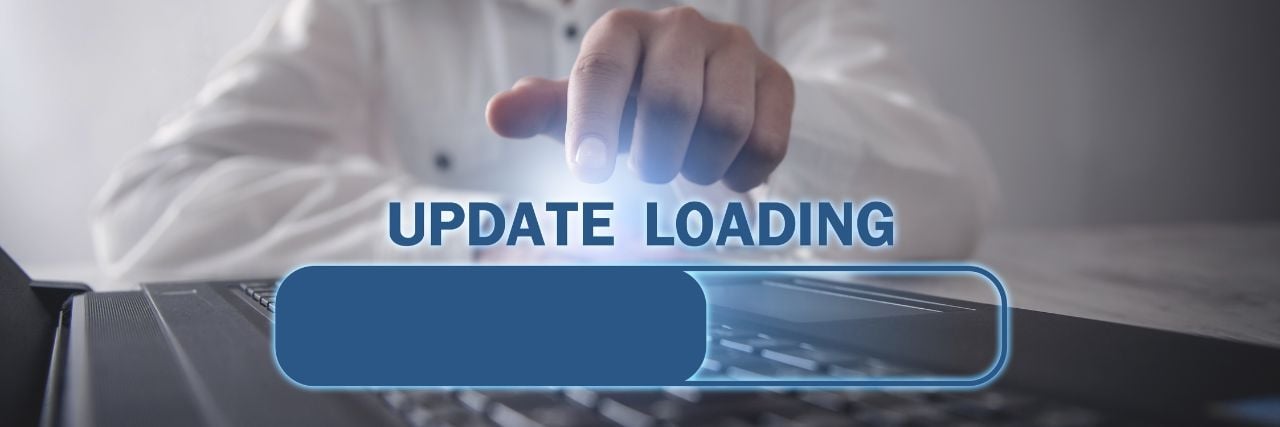What is Windows Patch Management? (& How It Helps Businesses)
March 5th, 2024 | 3 min. read

Are you tired of constantly pushing users to click “update now” for their workstations? Are these patches frequently adding unnecessary stress to your workload?
Fortunately, Windows patch management exists. It’s designed to lighten your workload – and Intelligent Technical Solutions (ITS), with our team of certified cybersecurity technicians, is dedicated to maximizing the IT efficiency of businesses across the United States. Stephen Jenkins, our Centralized Services Senior Engineer with over ten years of experience in technology, will answer questions such as:
- What is Windows patch management?
- How does patch management work?
- What are the benefits of Windows patch management?
By the end of this article, you can make the right choices for your business’s efficiency – and cybersecurity.
Windows Patch Management Explained

Windows patch management refers to managing and applying updates, known as patches, to Microsoft Windows operating systems. Microsoft releases these patches regularly to fix security vulnerabilities, and bugs or to improve the performance of the operating system and installed software.
How Does Patch Management Work?
Patch management is continuously tracking, implementing, and monitoring new updates. It often requires a dedicated team of employees to conduct the following steps:
1. Patch Identification
This step involves keeping track of the patches released – whether by Microsoft or other third-party applications. This can be done manually by checking Microsoft’s website or using automated tools that scan for available updates.
2. Patch Testing
Before deploying patches to production systems, it’s common practice to test them in a controlled environment to ensure they don’t cause compatibility issues or conflicts with existing software.
3. Patch Deployment
Once patches are tested and deemed safe, they are deployed to the target systems. This can be done manually or using automated tools.
SMBs (small to medium businesses) with an in-house IT department often use Windows Server Update Services (WSUS) or System Center Configuration Manager (SCCM). Meanwhile, managed IT service providers (MSPs) use enterprise-specific tools like Automate or Connectwise RMM.
“Enterprise-level tools help us apply patches for multiple locations and companies,” Jenkins explained. “It’s also better for security purposes.”
These tools also help verify if the patch was installed. MSPs can’t afford to overlook improperly installed patches, and the right tools help prevent mistakes.
4. Patch Monitoring
After deployment, monitoring systems to ensure patches are applied correctly and haven’t caused any unexpected issues is crucial. Reporting helps in keeping track of the patch status across different systems.
Jenkins mentioned clients often forget to restart their hardware – preventing patches from working.
“Everyone should watch out for it – sign out of your workstation, restart your machine, or at least put it in the log-in screen so updates can be done in the background.”
Robust monitoring and review processes quickly solve this common problem.
In cases where a patch causes critical issues, a rollback mechanism should also be in place to revert systems to their previous state until a resolution or fix is available.
How Windows Patch Management Helps Businesses

What exactly do you get when you keep up with your patch management?
1. Enhanced Security
Proper patch management ensures that systems are up to date with the latest security patches. This reduces the risk of cyberattacks exploiting known vulnerabilities, safeguarding sensitive data and infrastructure.
2. Cost Savings
Aligned with the first point, effective patch management can save costs associated with potential cyber incidents. Investing in regular patching helps prevent expensive security breaches, legal liabilities, and data recovery expenses.
3. Easier Budget Planning
Planned patch management allows for better allocation of resources, as it reduces emergency spending on addressing security breaches or system failures. By monitoring patches, you can also see when software loses support, allowing you to shift to more supported software.
4. Improved System Stability
Patch management helps in addressing bugs and performance issues, ensuring the stability and reliability of Windows systems. This minimizes downtime caused by system failures or glitches.
5. Compliance and Governance
Maintaining systems updated with the latest patches ensures compliance with industry standards and regulations. This means IT directors can demonstrate adherence to security protocols and governance requirements.
“Regulations like HIPAA and PCI-DSS require patch management. Part of our job as an MSP is to keep our clients covered,” Jenkins said.
By ensuring systems are updated and compliant with regulations, companies mitigate the risk of costly fines or legal actions resulting from non-compliance.
6. Resource Optimization
Automated patch deployment tools streamline the process, allowing IT teams to allocate their time and resources more efficiently. Whether you have limited resources or are outsourcing your IT to a more resource-heavy third party, automated tools help maximize the productivity of our team.
You can focus on higher-value tasks rather than manual patching - positively impacting productivity and overall business performance.
7. Risk Mitigation
Proactively managing patches reduces the risk of security breaches and associated costs. By preventing potential cyber incidents, your IT team can save the organization from financial losses and reputational damage.
You can also negotiate better insurance premiums and terms by demonstrating proactive risk management through up-to-date patching practices.
Want to Learn More About Windows Patch Management?

Navigating the complexities of Windows patch management is essential, yet it can be a daunting task for any business striving to maintain optimal IT efficiency and security.
Throughout this article, we've explored the undeniable benefits of effective patch management—enhanced security, cost savings, easier budget planning, improved system stability, compliance and governance, resource optimization, and risk mitigation. These elements are crucial for safeguarding your IT infrastructure against evolving cyber threats.
At ITS, we recognize the challenges that come with managing IT infrastructure. We're not just an industry-leading MSP; we're your partner in ensuring that your IT environment is not only up-to-date but also secure and efficient. To further assist you in mastering Windows patch management and cybersecurity, we offer the following complimentary resources:
- Best Practices to Keep Software Updated for Your Business
- How Small Businesses Can Regain Peace of Mind Amidst Rising Cyber Threats
- 4 Security Benefits of Managed IT Services (& 2 Disadvantages)
If you have more questions about Windows patch management, get in touch with our IT experts so they can quickly give you the answers you need.
Kharmela Mindanao is a senior content writer for Intelligent Technical Solutions. She’s called Ella by her friends and likes yoga, literature, and mountain climbing. Her favorite book is Anxious People by Fredrik Backman. She creates art and poetry and is on a quest to find the best cheesecake.
Topics:
